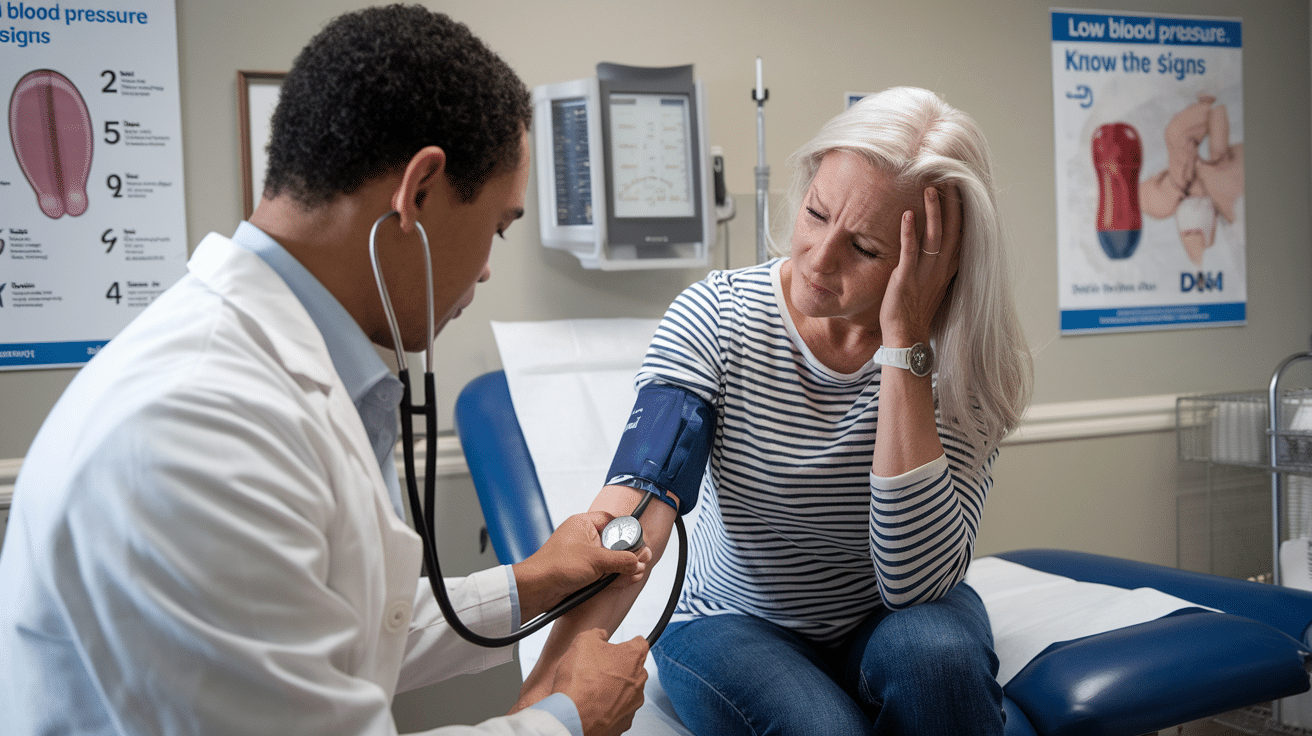Have you ever felt dizzy, lightheaded, or suddenly fatigued for no apparent reason? 🤔 These could be signals of low blood pressure, a condition that often goes unnoticed but can significantly impact your daily life. While you might brush off these symptoms as mere inconveniences, understanding them could be crucial for your health and well-being.
Low blood pressure, or hypotension, affects millions worldwide, yet many remain unaware of its subtle signs. Ignoring these symptoms can lead to serious consequences, from falls and injuries to more severe cardiovascular issues. But here’s the good news: by familiarizing yourself with the common signals, you can take proactive steps to manage your health effectively.
In this comprehensive guide, we’ll explore the 7 key aspects of low blood pressure you need to know. From understanding the basics to recognizing physical and cognitive symptoms, we’ll equip you with the knowledge to identify potential issues early. You’ll learn about Cardiovascular Indicators, situational triggers, and when it’s time to seek medical help. Most importantly, we’ll share strategies to prevent and manage low blood pressure, empowering you to take control of your health. Let’s dive in and stay informed about this often-overlooked condition!
Understanding Low Blood Pressure
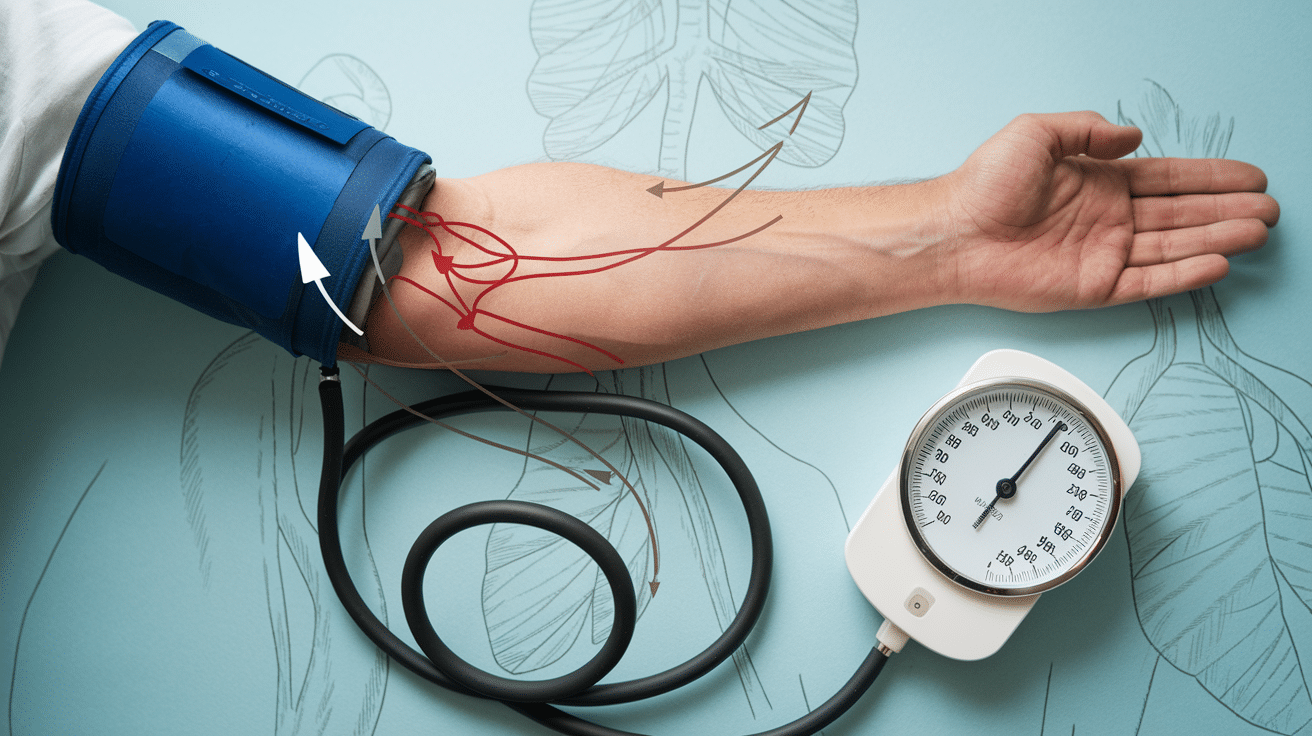
Definition and normal ranges
Blood pressure is typically measured using two numbers: systolic pressure (when your heart beats) and diastolic pressure (when your heart rests). A normal blood pressure reading is generally considered to be below 120/80 mmHg. Low blood pressure, or hypotension, is typically defined as a reading below 90/60 mmHg.
| Blood Pressure Category | Systolic (mmHg) | Diastolic (mmHg) |
|---|---|---|
| Normal | Less than 120 | Less than 80 |
| Low | Less than 90 | Less than 60 |
Causes of low blood pressure
Several factors can contribute to low blood pressure:
- Dehydration
- Blood loss
- Certain medications
- Heart problems
- Endocrine disorders
- Pregnancy
- Nutritional deficiencies
Risk factors
You may be at higher risk of developing low blood pressure if you:
- Are over 65 years old
- Take certain medications (e.g., diuretics, beta-blockers)
- Have certain medical conditions (e.g., heart disease, Parkinson’s disease)
- Are pregnant
- Have a poor diet lacking essential nutrients
Importance of awareness
Understanding low blood pressure is crucial for your overall health. By recognizing the signs and causes, you can take proactive steps to manage your blood pressure effectively. Regular monitoring and awareness of your body’s signals can help you identify potential issues early, allowing for timely intervention and prevention of more serious complications.
Recognizing Physical Symptoms
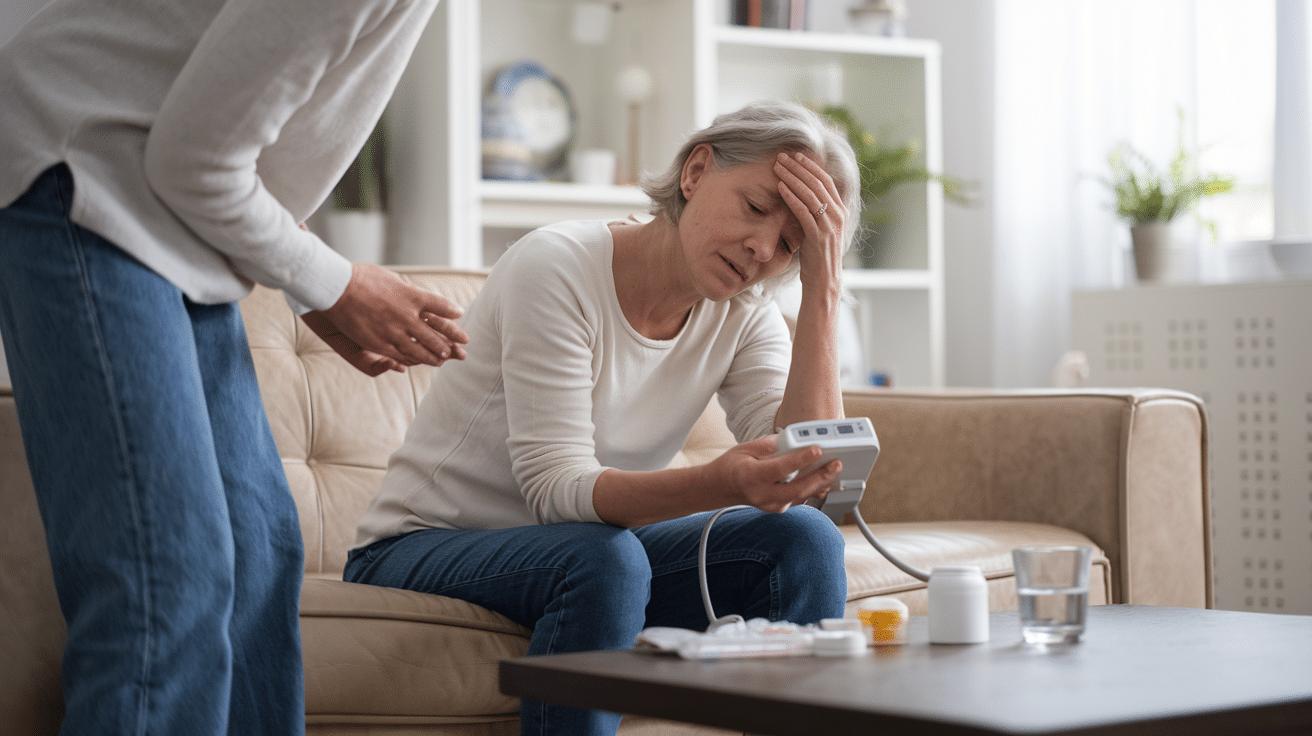
Dizziness and lightheadedness
As you navigate the symptoms of low blood pressure, dizziness and lightheadedness are often the first signs you’ll notice. These sensations can make you feel off-balance or as if the room is spinning. You might experience these symptoms particularly when:
- Standing up quickly from a sitting or lying position
- After prolonged standing
- During or after exercise
| Severity | Description | Action |
|---|---|---|
| Mild | Slight unsteadiness | Monitor and rest |
| Moderate | Difficulty focusing | Sit down and hydrate |
| Severe | Unable to stand | Seek medical attention |
Fainting or near-fainting
You may experience syncope (fainting) or pre-syncope (near-fainting) due to insufficient blood flow to your brain. These episodes can be frightening and potentially dangerous.
- Pre-syncope symptoms:
- Feeling of warmth
- Sweating
- Dimming vision
- Ringing in the ears
Blurred vision
Your vision may become temporarily blurred or cloudy when your blood pressure drops. This occurs because your eyes aren’t receiving adequate blood flow.
Nausea
Low blood pressure can cause you to feel nauseated or queasy. This symptom often accompanies dizziness and may worsen if you try to stand or move around.
Fatigue and weakness
You might experience an overwhelming sense of tiredness or lack of energy. This fatigue can affect your daily activities and may be accompanied by:
- Muscle weakness
- Difficulty concentrating
- Reduced stamina
Now that you’re familiar with these physical symptoms, it’s important to understand how low blood pressure can affect your cognitive and emotional state.
Identifying Cognitive and Emotional Signs
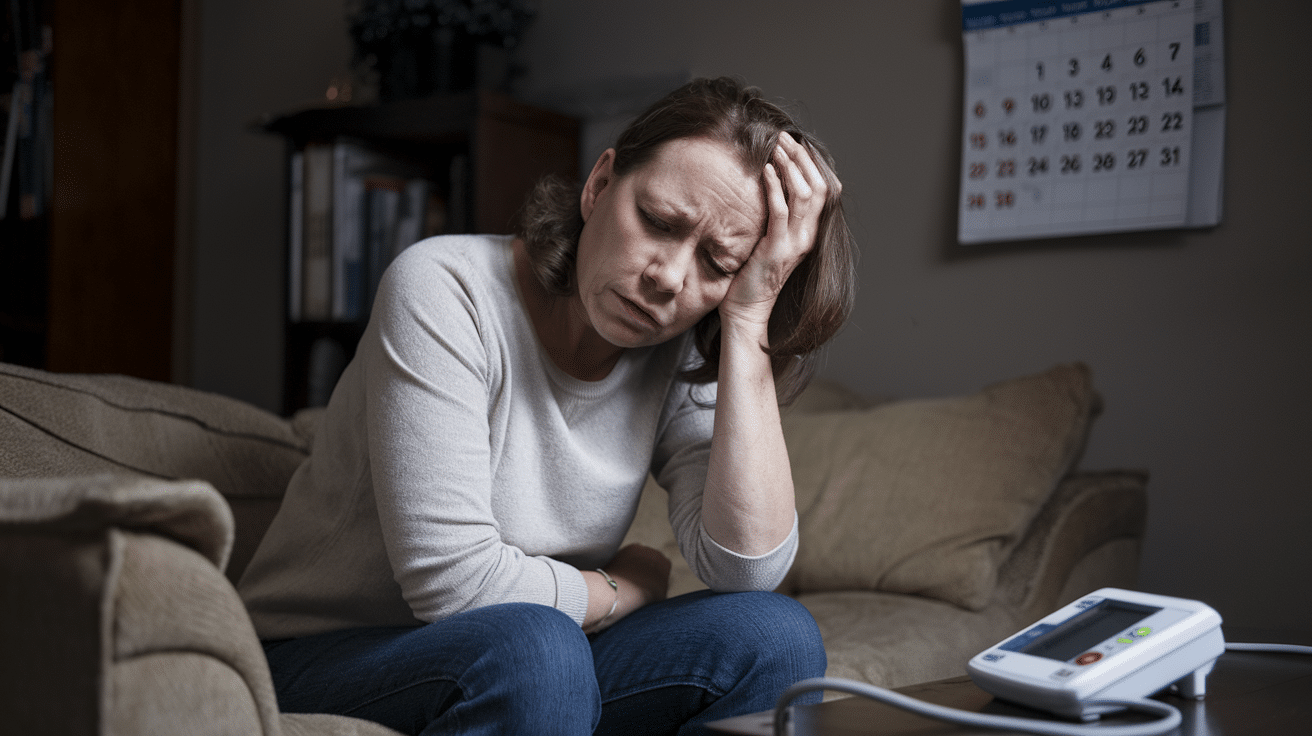
Confusion or trouble concentrating
You may notice that low blood pressure can significantly affect your cognitive functions. When your brain doesn’t receive enough oxygen-rich blood, you might experience difficulty focusing on tasks or remembering important information. This confusion can manifest in various ways:
- Struggling to follow conversations
- Forgetting simple instructions
- Having trouble making decisions
- Feeling mentally “foggy” or slow
Mood changes and irritability
Low blood pressure can also impact your emotional state. You might find yourself experiencing sudden mood swings or feeling unusually irritable. These changes can be frustrating and may affect your relationships and daily interactions. Here’s a breakdown of potential mood-related symptoms:
| Mood Change | Description |
|---|---|
| Irritability | Feeling easily annoyed or frustrated |
| Restlessness | Difficulty sitting still or relaxing |
| Apathy | Lack of interest in usual activities |
| Mood swings | Rapid shifts between emotions |
Anxiety or nervousness
As your body struggles to maintain proper blood flow, you might experience increased feelings of anxiety or nervousness. This can be a direct result of the physical symptoms you’re experiencing, such as dizziness or weakness. You may notice:
- Racing thoughts or excessive worry
- Feeling on edge or restless
- Experiencing a sense of impending doom
- Having difficulty relaxing or sleeping
These cognitive and emotional signs can be subtle but should not be ignored. If you find yourself experiencing these symptoms consistently, it’s important to monitor your blood pressure and consider speaking with a healthcare professional. Next, we’ll explore the cardiovascular indicators that can provide further insight into your blood pressure status.
Monitoring Cardiovascular Indicators

Rapid or shallow breathing
When monitoring for low blood pressure, paying attention to your breathing patterns is crucial. Rapid or shallow breathing, also known as tachypnea, can be a significant indicator of hypotension. You might notice:
- Breathing rate exceeding 20 breaths per minute
- Difficulty taking deep, full breaths
- Feeling like you can’t get enough air
This occurs because your body is trying to compensate for the reduced oxygen delivery caused by low blood pressure. Your respiratory system works harder to supply oxygen to vital organs.
Cold, clammy skin
Another cardiovascular indicator of low blood pressure is cold, clammy skin. You may experience:
- A noticeable drop in skin temperature, especially in extremities
- A thin layer of sweat on your skin, making it feel damp or sticky
- Paleness or a bluish tint to your skin, particularly in lips or nail beds
These symptoms arise as your body redirects blood flow to essential organs, reducing circulation to your skin and extremities.
Weak and rapid pulse
Checking your pulse can provide valuable information about your cardiovascular status. In cases of low blood pressure, you might observe:
- A pulse that feels faint or difficult to detect
- Heart rate exceeding 100 beats per minute
- Irregular rhythm or palpitations
Here’s a quick guide to help you assess your pulse:
| Pulse Characteristic | Normal Range | Low Blood Pressure Indicator |
|---|---|---|
| Rate (beats/minute) | 60-100 | > 100 |
| Strength | Strong, steady | Weak, thready |
| Rhythm | Regular | May be irregular |
By familiarizing yourself with these cardiovascular indicators, you’ll be better equipped to recognize potential signs of low blood pressure. If you consistently notice these symptoms, it’s important to consult with your healthcare provider for proper evaluation and management.
Situational Symptoms to Watch For
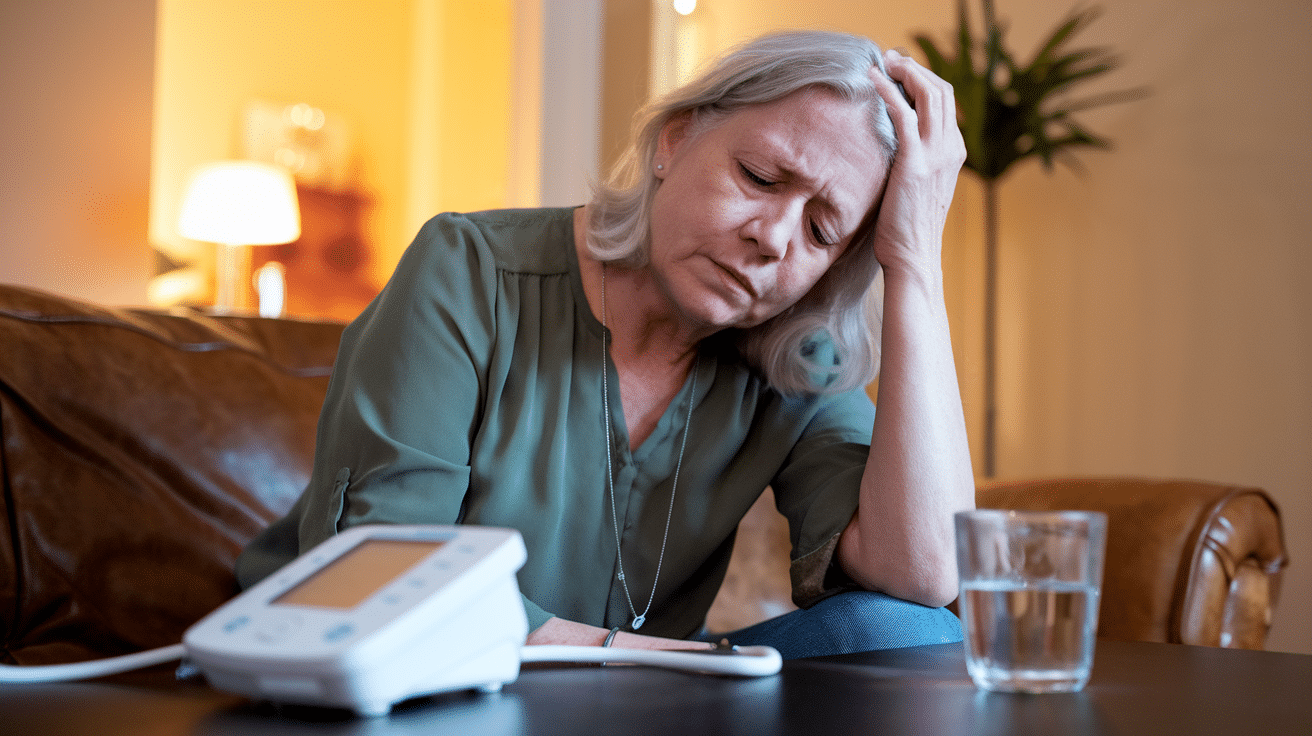
Postural changes (orthostatic hypotension)
Orthostatic hypotension, a common situational symptom of low blood pressure, occurs when you stand up quickly from a sitting or lying position. You may experience:
- Dizziness or lightheadedness
- Blurred vision
- Weakness or fatigue
- Brief loss of consciousness (fainting)
To minimize these symptoms, stand up slowly and hold onto something stable for support. If you frequently experience orthostatic hypotension, consider using compression stockings to improve blood flow.
Post-meal blood pressure drops
After eating, your body diverts blood to your digestive system, potentially causing a temporary drop in blood pressure. You might notice:
- Fatigue or sleepiness
- Dizziness
- Nausea
To manage post-meal symptoms:
- Eat smaller, more frequent meals
- Limit high-carbohydrate foods
- Stay hydrated during meals
- Avoid alcohol with meals
Dehydration-related symptoms
Dehydration can significantly impact your blood pressure. Watch for these signs:
- Thirst
- Dry mouth
- Dark urine
- Reduced urination
- Fatigue
- Headache
| Hydration Status | Urine Color | Frequency |
|---|---|---|
| Well-hydrated | Pale yellow | Regular |
| Mildly dehydrated | Dark yellow | Decreased |
| Severely dehydrated | Amber or brown | Infrequent |
Ensure you drink enough water throughout the day, especially in hot weather or during physical activity. Now that you’re aware of these situational symptoms, let’s explore when it’s crucial to seek medical attention for low blood pressure.
When to Seek Medical Attention
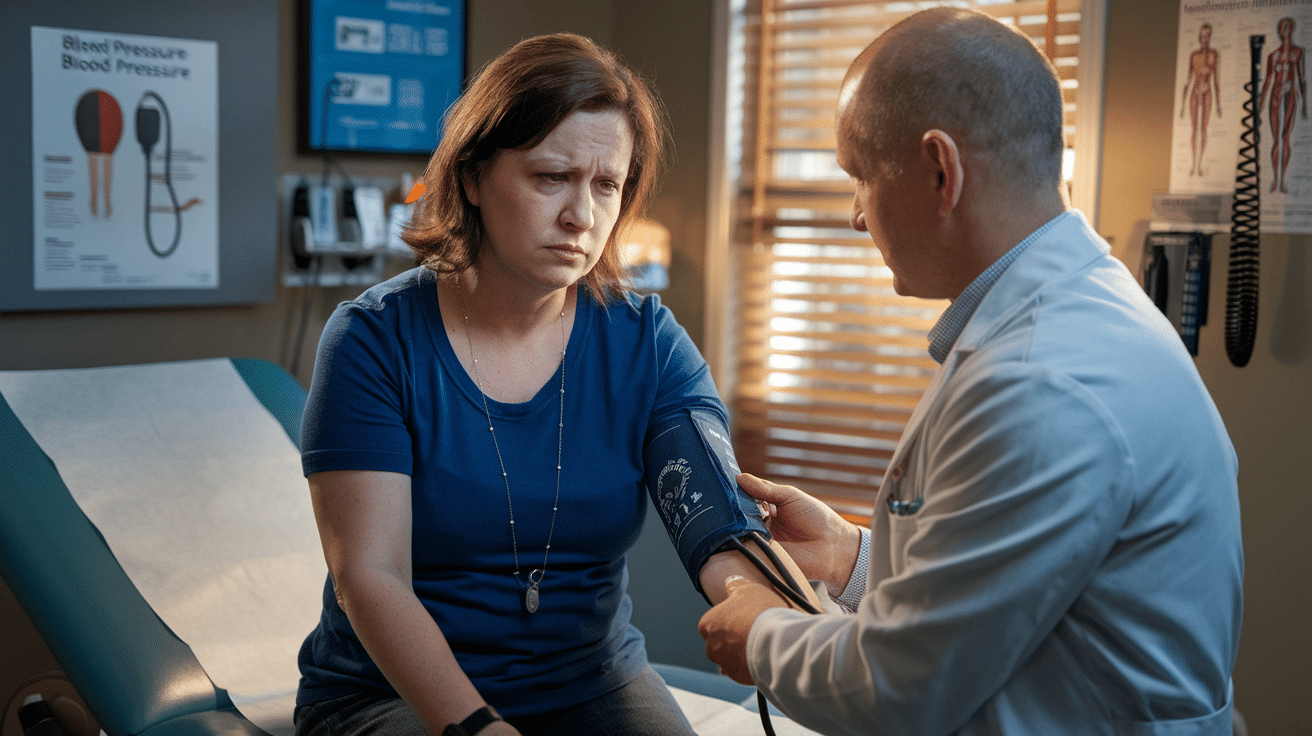
A. Severe or persistent symptoms
While occasional mild symptoms of low blood pressure may not be cause for alarm, you should be aware of severe or persistent symptoms that warrant medical attention. These include:
- Prolonged dizziness or lightheadedness
- Fainting spells (syncope)
- Severe chest pain
- Shortness of breath
- Continuous nausea or vomiting
If you experience any of these symptoms for an extended period or with increasing intensity, it’s crucial to seek medical help promptly.
B. Sudden onset of symptoms
A sudden drop in blood pressure can be particularly dangerous. You should be vigilant for:
- Abrupt dizziness or vertigo
- Sudden weakness or fatigue
- Unexpected blurred vision
- Rapid, shallow breathing
These symptoms may indicate a severe underlying condition and require immediate medical evaluation.
C. Symptoms accompanied by other health issues
Low blood pressure symptoms coupled with other health concerns can signify a more serious problem. Pay attention if you experience:
| Symptom Combination | Possible Indication |
|---|---|
| Chest pain + shortness of breath | Heart attack |
| Severe headache + confusion | Stroke |
| Fever + chills | Infection or sepsis |
| Abdominal pain + blood in stool | Internal bleeding |
D. Recurrent episodes
If you find yourself frequently experiencing low blood pressure symptoms, it’s time to consult a healthcare professional. Keep a log of:
- Frequency of episodes
- Duration of symptoms
- Intensity of each occurrence
- Any triggers you’ve noticed
This information will help your doctor determine the underlying cause and develop an appropriate treatment plan. Remember, while occasional mild symptoms may not be alarming, persistent or severe symptoms should never be ignored. Your health is paramount, and seeking timely medical attention can prevent potential complications.
Prevention and Management Strategies
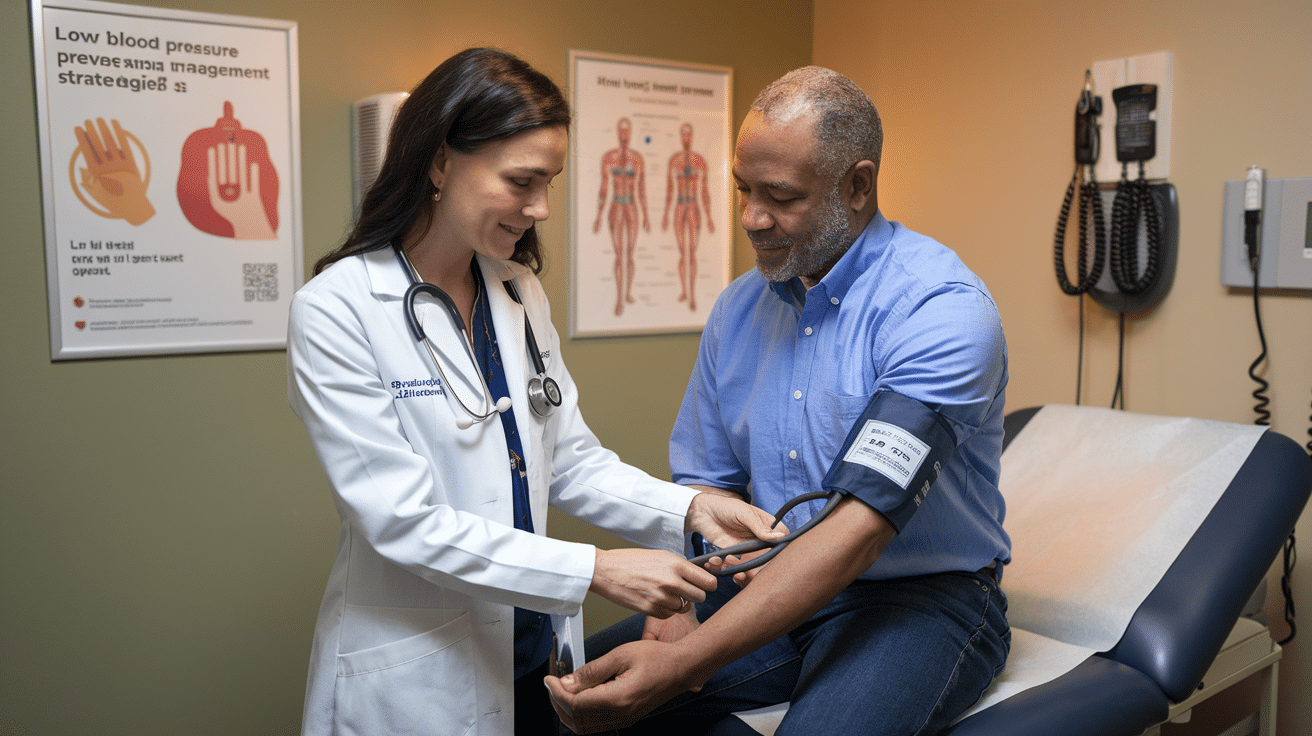
Dietary adjustments
You can manage low blood pressure through simple dietary changes. Increase your salt intake, but consult your doctor first. Foods high in vitamin B12 and folate, such as lean meats and fortified cereals, can help boost your blood pressure. Here’s a quick guide:
| Food Type | Examples | Benefits |
|---|---|---|
| Salty foods | Olives, pickles, soup | Increase blood volume |
| High B12 foods | Eggs, fish, dairy | Support red blood cell production |
| Folate-rich foods | Leafy greens, legumes | Improve blood circulation |
Hydration techniques
Staying well-hydrated is crucial for maintaining healthy blood pressure. Aim for 8-10 glasses of water daily. For an extra boost, try:
- Drinking a glass of water before standing up
- Consuming electrolyte-rich beverages during hot weather
- Limiting alcohol and caffeine intake
Gradual position changes
To prevent sudden drops in blood pressure, make position changes slowly. When getting up from bed:
- Sit up gradually
- Dangle your feet over the edge for a minute
- Stand up slowly, holding onto something stable
Compression stockings
You can use compression stockings to improve blood flow and prevent blood pooling in your legs. These tight-fitting socks apply pressure to your lower legs, helping to push blood back towards your heart.
Medication review with healthcare provider
Some medications can contribute to low blood pressure. Work with your healthcare provider to review your current medications. They may adjust dosages or suggest alternatives to help manage your blood pressure effectively.
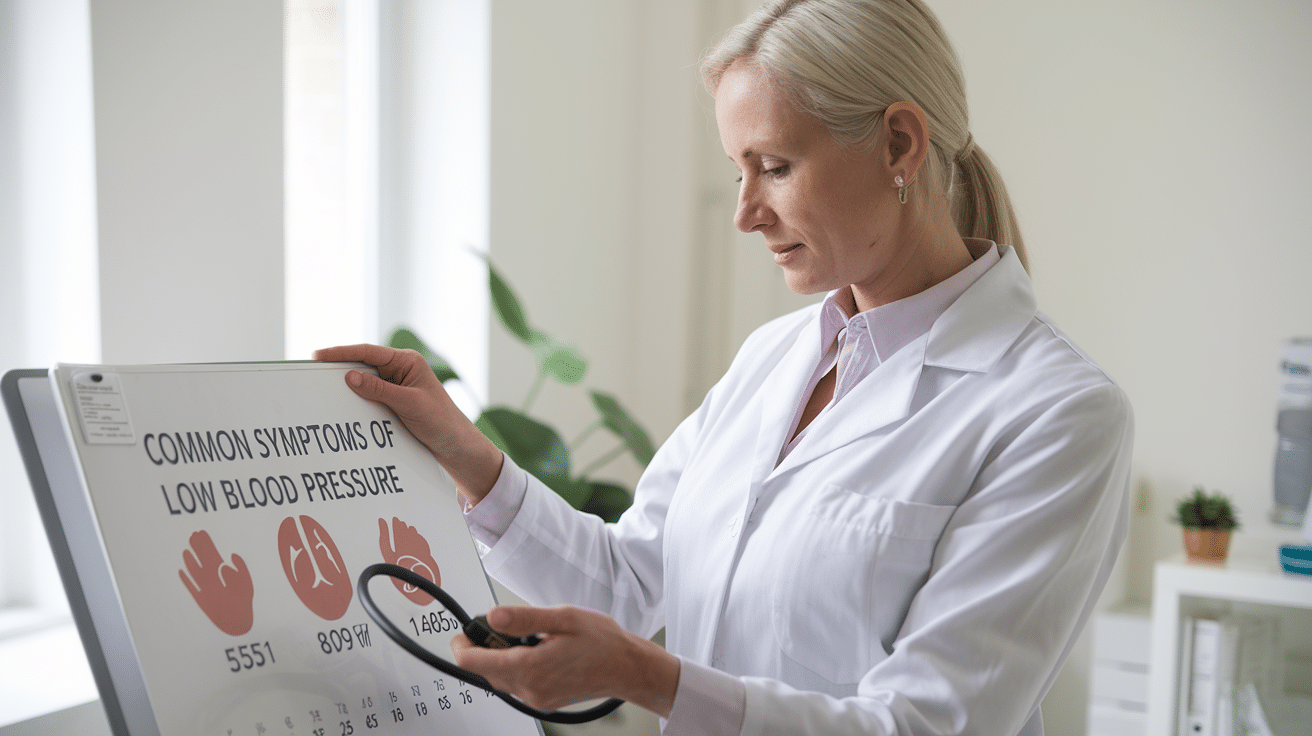
Recognizing the signs of low blood pressure is crucial for maintaining your overall health and well-being. By familiarizing yourself with the physical, cognitive, and emotional symptoms, as well as understanding the situational factors that can trigger low blood pressure, you’re better equipped to manage this condition effectively. Remember to pay attention to your body’s signals and monitor your cardiovascular indicators regularly.
If you experience persistent or severe symptoms of low blood pressure, don’t hesitate to seek medical attention. Your healthcare provider can offer personalized advice and treatment options tailored to your specific needs. By staying informed and proactive in your approach to low blood pressure, you can take control of your health and enjoy a better quality of life.

